For patients with severe joint damage and rheumatological diseases, doctors often prescribe medications based on glucocorticoids. Many people are afraid of the possibility of such treatment, because they have heard about unpleasant side effects. hormonal medications. Is this really true? What are these drugs?
Glucocorticoids
Glucocorticoid drugs, or GCS (glucocorticosteroids) are hormones. They are produced in a special zone of the adrenal glands - the cortex - under the influence of the central nervous system and the pituitary gland.
These hormones began to be used as medicine in the mid-20th century. The most famous and active GCS produced by the human body is cortisol.
What other glucocorticoids are there?
Classification
GCS are natural and synthetic. A group of semi-synthetic drugs is also sometimes isolated. Natural glucocorticoids include:
- Cortisone.
- Hydrocortisone (cortisol).
Synthetic hormones were created by man to treat diseases. They are not produced in the body, but are not inferior in potency to natural ones. Synthetic GCS are:
- Betamethasone (Beloderm, Betazon, Betaspan, Diprospan, Celederm, Celeston).
- Dexamethasone (Dexazone, Dexamed, Maxidex).
- Prednisolone (Prednisol, Medopred, Decortin).
- Methylprednisolone (Medrol, Metypred).
- Triamcinolone (Kenalog, Berlicort, Polcortolon, Triacort).
Glucocorticoids are also divided into groups according to the duration of their action. Natural hormones – cortisone and hydrocortisone – have the shortest duration of action. Average duration work has the prednisolone group. And dexamethasone, betamethasone and triamcinolone act the longest.
What effects do these hormones have?
Effects

The effects of glucocorticoids are extremely varied. They affect the body both positively and negatively. However, such an action is not a reason to refuse glucocorticoid therapy, because the benefits of treatment almost always outweigh the harm. In addition, there are methods of protection against unpleasant consequences GKS.
Glucocorticosteroids have the following clinical effects on the human body:
- Anti-inflammatory.
- Immunomodulatory.
- Anti-allergic.
In addition, they actively change the metabolism of many substances. Hormones can influence metabolism:
- proteins;
- fats;
- carbohydrates;
- water and electrolytes.
They also pay attention to the work of almost all organs. human body. The cardiovascular and endocrine systems are especially susceptible to the effects of hormones.
Anti-inflammatory effect
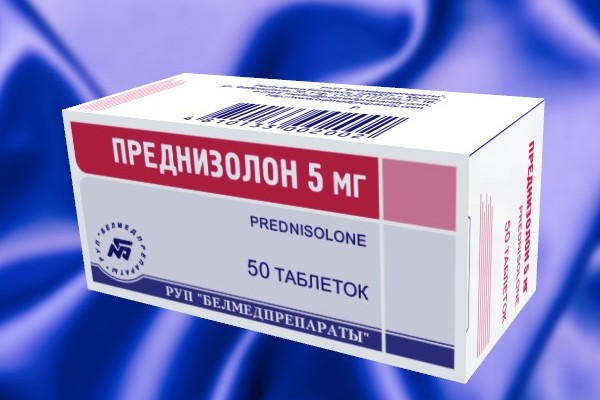
It is thanks to their strong anti-inflammatory effect that hormones have found and firmly occupied their niche in medicine. They are especially often used in rheumatology.
The high activity of GCS against inflammation allows them to successfully fight diseases such as:
- Rheumatoid arthritis.
- Reactive arthritis.
- SLE, or systemic lupus erythematosus.
- Ankylosing spondylitis and other autoimmune processes.
Glucocorticoids inhibit the processes of inflammation and destruction in the joints, without which no rheumatological disease can exist. They are also prescribed by orthopedic traumatologists for arthrosis with severe pain and complicated by an inflammatory process.
How do GCS exert their anti-inflammatory effect?
Mechanism
Hormones carry out their anti-inflammatory effect by suppressing the work of a special enzyme - phospholipase A2. They indirectly affect the functions of other substances responsible for development inflammatory process.
In addition, GCS significantly reduce the release of fluid from the vascular bed by narrowing the capillaries, that is, they eliminate swelling.
Against the background of their action, microcirculation in the affected area increases, and the function of the damaged organ is restored faster.
At rheumatoid arthritis glucocorticoids protect cartilage and bones from destruction, allowing the structure and function of joints to be preserved.
Immunomodulatory effect
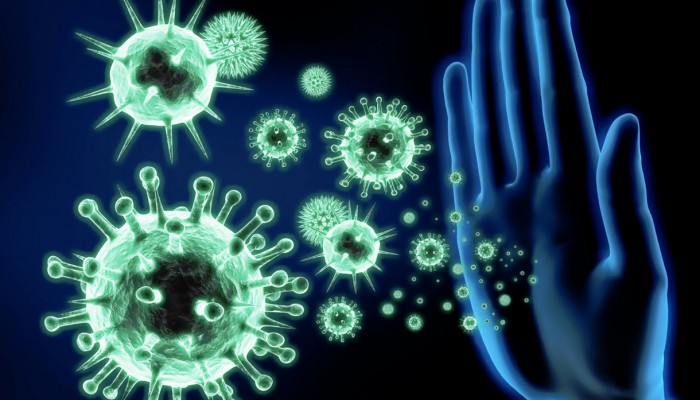
A feature of glucocorticoids is the inhibition of cellular immunity. They also inhibit the proliferation of lymphoid tissue. This explains the increased susceptibility to viral infections in the treatment of GCS.
However, in individuals with pre-existing immunodeficiency, these hormones can, on the contrary, restore required level immunoglobulin antibodies.
The effect of immune suppression by glucocorticoids is widely used in transplantology to prevent the patient from rejecting transplanted tissues.
Antiallergic effect
Any development mechanism allergic reaction quite complicated. When a foreign substance enters the body immune system begins to synthesize specific antibodies - immunoglobulins.
They interact with certain structures - mast cells. As a result of this process, a number of biologically active substances, one of which is histamine. It is this that causes the occurrence of unpleasant and dangerous symptoms characteristic of allergies.
Glucocorticoids block the interaction of immunoglobulins with mast cells and inhibit the development of an allergic reaction. GCS is used to combat anaphylactic shock, Quincke's edema, urticaria and other forms of allergies.
Effect on metabolism

Steroid hormones affect all types of metabolism. However, their participation in carbohydrate metabolism is particularly dangerous. They have the following effects:
- They increase blood glucose levels – leading to the development of hyperglycemia.
- Promote the appearance of sugar in the urine - glucosuria.
- Lead to the emergence diabetes mellitus, which is also called steroid.
The influence of hormones on protein metabolism is also unsafe for patients. They suppress their synthesis and accelerate their decay. These processes are especially pronounced in muscles and skin.
The outcome of this catabolic effect of glucocorticoids is muscle atrophy, stretch marks, weight loss, sagging skin, and slow wound healing.
Due to the negative effect of GCS on fat metabolism, an asymmetric distribution of subcutaneous fat throughout the body occurs. In such patients, it is practically absent in the extremities, but is deposited in excess in the face, neck, and chest.
Steroid hormones retain water and sodium in the body, but at the same time stimulate the release of calcium and its removal from the bones. Along with impaired protein metabolism, hypocalcemia leads to the development of osteoporosis.
Effect on the cardiovascular system

The effect of glucocorticoids on the cardiovascular system is a complex and diverse process. But their ability to constrict blood vessels with increased blood pressure is important for the patient. This pressor effect can serve both to the benefit of the patient and to its detriment.
At sharp drop blood pressure, vasodilation, shock, it is the introduction of hormones that often saves lives. But at the same time, their systematic use contributes to the development hypertension and heart damage.
Effect on the endocrine system
Long-term use of hormonal drugs for joint diseases or other pathologies triggers a feedback mechanism. In the brain, the synthesis of stimulating hormones is inhibited, and the adrenal glands cease to perform their functions.
Due to imbalance in work endocrine glands everyone is violated metabolic processes in the body. In addition, GCS inhibit the production of sex hormones. This may cause various violations in sexual and reproductive life. Reduced levels of sex hormones also lead to osteoporosis.
How to deal with unwanted effects GKS?
Fighting negative effects
Despite the impressive list of dangerous side effects, hormones continue to be a popular treatment for many diseases - joints, skin, immune system.
Sometimes GCS is the drug of choice. This is often noted when autoimmune diseases when other medications fail.
Careful selection of the dose and type of therapy itself can reduce the frequency and severity of side effects. There is treatment with large doses, but short-term - pulse therapy. Conversely, hormonal drugs can be taken throughout life, but in a reduced dosage.
It is important that the treatment is carried out under the supervision of a doctor who will regularly evaluate the condition of the heart and muscles, blood sugar and calcium levels, and the patient’s appearance.
As a rule, with an adequately selected dose of the drug, glucocorticoid therapy does not harm the patient special harm, but significantly improves his well-being and health.
Natural corticosteroids
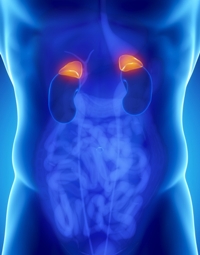 Corticosteroids– common name hormones adrenal cortex, which includes glucocorticoids and mineralocorticoids. The main glucocorticoids produced in the human adrenal cortex are cortisone and hydrocortisone, and the mineralocorticoid is aldosterone.
Corticosteroids– common name hormones adrenal cortex, which includes glucocorticoids and mineralocorticoids. The main glucocorticoids produced in the human adrenal cortex are cortisone and hydrocortisone, and the mineralocorticoid is aldosterone. Corticosteroids do a lot important functions in the body.
Glucocorticoids refer to steroids, which have an anti-inflammatory effect, they participate in the regulation of the metabolism of carbohydrates, fats and proteins, control puberty, function, the body's response to stress, and contribute to the normal course of pregnancy. Corticosteroids are inactivated in the liver and excreted in the urine.
Aldosterone regulates the metabolism of sodium and potassium. Thus, under the influence mineralocorticoids Na+ is retained in the body and the excretion of K+ ions from the body increases.
Synthetic corticosteroids
Synthetic corticosteroids, which have the same properties as natural ones, have found practical application in medical practice. They are capable of temporarily suppressing the inflammatory process, but they have no effect on the infectious origin or pathogens of the disease. After the cessation of action of the corticosteroid drug, it resumes.Corticosteroids cause tension and stress in the body, and this leads to a decrease, since immunity is provided at a sufficient level only in a relaxed state. Considering the above, we can say that the use of corticosteroids contributes to the protracted course of the disease and blocks the regeneration process.
In addition, synthetic corticosteroids suppress the function of natural corticosteroid hormones, which leads to dysfunction of the adrenal glands in general. Corticosteroids affect the functioning of other endocrine glands and disrupt the hormonal balance of the body.
Corticosteroid drugs, eliminating inflammation, also have an analgesic effect. Synthetic corticosteroid drugs include Dexamethasone, Prednisolone, Sinalar, Triamcinolone and others. These drugs are more active and cause less side effects than natural ones.
Forms of release of corticosteroids
Corticosteroids are produced in the form of tablets, capsules, solutions in ampoules, ointments, liniments, and creams. (Prednisolone, Dexamethasone, Budenofalm, Cortisone, Cortinef, Medrol).Preparations for internal use (in tablets and capsules)
- Prednisolone;
- Celeston;
- Triamcinolone;
- Kenacort;
- Cortineff;
- Polcortolon;
- Kenalog;
- Metipred;
- Berlicourt;
- Florinef;
- Medrol;
- Lemod;
- Decadron;
- Urbazon et al.
Preparations for injections
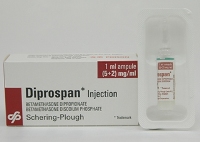
- Prednisolone;
- Hydrocortisone;
- Diprospan (betamethasone);
- Kenalog;
- Flosteron;
- Medrol et al.
Preparations for local use (topical)
- Prednisolone (ointment);
- Hydrocortisone (ointment);
- Lokoid (ointment);
- Cortade (ointment);
- Afloderm (cream);
- Laticort (cream);
- Dermovate (cream);
- Fluorocort (ointment);
- Lorinden (ointment, lotion);
- Sinaflan (ointment);
- Flucinar (ointment, gel);
- Clobetasol (ointment), etc.
Weakly active agents: Prednisolone, Hydrocortisone, Cortade, Lokoid;
Moderately active: Afloderm, Laticort, Dermovate, Fluorocort, Lorinden;
Highly active: Akriderm, Advantan, Kuterid, Apulein, Cutivate, Sinaflan, Sinalar, Sinoderm, Flucinar.
Very highly active: Clobetasol.
Corticosteroids for inhalation
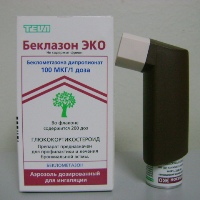
- Beclamethasone in the form of metered aerosols (Becotide, Aldecim, Beclomet, Beclocort); in the form of becodisks (powder in a single dose, inhaled using a diskhaler); in the form of a dosed aerosol for inhalation through the nose (Beclomethasone-nasal, Beconase, Aldecim);
- Flunisolide in the form of metered aerosols with a spacer (Ingacort), for nasal use (Sintaris);
- Budesonide – dosed aerosol (Pulmicort), for nasal use – Rhinocort;
- Fluticasone in the form of Flixotide and Flixonase aerosols;
- Triamcinolone - metered dose aerosol with a spacer (Azmacort), for nasal use - Nazacort.
Indications for use
Corticosteroids are used to suppress inflammation in many branches of medicine and for many diseases.Indications for the use of glucocorticoids
- Rheumatism;
- rheumatoid and other types;
- collagenoses, autoimmune diseases(scleroderma, systemic lupus erythematosus, periarteritis nodosa, dermatomyositis);
- blood diseases (myeloblastic and lymphoblastic leukemia);
- some types of malignant neoplasms;
- skin diseases (neurodermatitis, psoriasis, seborrheic dermatitis, discoid lupus erythematosus, atopic dermatitis, erythroderma, lichen planus);
- bronchial asthma;
- allergic diseases;
- and bronchitis, fibrosing alveolitis;
- ulcerative colitis and;
- spicy ;
- hemolytic;
- viral diseases(infectious mononucleosis, viral and others);
- external (acute and chronic);
- treatment and prevention of shock;
- in ophthalmology (with non-communicable diseases: iritis, keratitis, iridocyclitis, scleritis, uveitis);
- neurological diseases (multiple sclerosis, acute trauma spinal cord, optic nerve;
- during organ transplantation (to suppress rejection).
Indications for the use of mineralocorticoids
- Addison's disease ( chronic failure hormones of the adrenal cortex);
- myasthenia gravis (an autoimmune disease manifested by muscle weakness);
- disorders of mineral metabolism;
- adynamia and muscle weakness.
Contraindications
 Contraindications for the use of glucocorticoids:
Contraindications for the use of glucocorticoids:- hypersensitivity to the drug;
- severe infections (except tuberculous meningitis and septic shock);
- immunization with live vaccine.
Contraindications for the use of mineralocorticoids:
- high blood pressure;
- diabetes mellitus;
- low potassium levels in the blood;
- renal and hepatic failure.
Adverse reactions and precautions
Corticosteroids can cause a wide variety of side effects. When using weakly or moderately active agents adverse reactions less pronounced and occur rarely. High doses of drugs and the use of highly active corticosteroids, their long-term use can cause the following side effects:- the appearance of edema due to sodium and water retention in the body;
- promotion blood pressure;
- increased blood sugar levels (even the development of steroid diabetes mellitus is possible);
- osteoporosis due to increased calcium secretion;
- aseptic necrosis of bone tissue;
- exacerbation or occurrence peptic ulcer stomach; gastrointestinal bleeding;
- increased thrombus formation;
- weight gain;
- the occurrence of bacterial and fungal infections due to decreased immunity (secondary immunodeficiency);
- menstrual irregularities;
- neurological disorders;
- development of glaucoma and cataracts;
- skin atrophy;
- increased sweating;
- appearance;
- suppression of the tissue regeneration process (slow wound healing);
- excess facial hair growth;
- suppression of adrenal function;
- instability of mood, .
- excess fat deposition in certain areas of the body: on the face (the so-called “moon face”), on the neck (“bull neck”), chest, and abdomen;
- the muscles of the limbs are atrophied;
- bruising on the skin and stretch marks (stretch marks) on the abdomen.
To reduce the risk of developing adverse reactions, it is important to respond promptly to their occurrence, adjust doses (use small doses whenever possible), control body weight and caloric content of consumed foods, limit consumption table salt and liquids.
How to use corticosteroids?
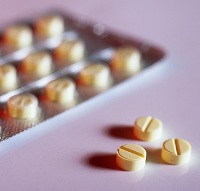 Glucocorticosteroids can be used systemically (in the form of tablets and injections), locally (intra-articular, rectal administration), topically (ointments, drops, aerosols, creams).
Glucocorticosteroids can be used systemically (in the form of tablets and injections), locally (intra-articular, rectal administration), topically (ointments, drops, aerosols, creams). The dosage regimen is prescribed by the doctor. The tableted drug should be taken from 6 a.m. (first dose) and no later than 2 p.m. for subsequent doses. Such conditions of administration are necessary to approach the physiological entry of glucocorticoids into the blood when they are produced by the adrenal cortex.
In some cases, with large doses and depending on the nature of the disease, the dose is distributed by the doctor to be distributed evenly throughout the day in 3-4 doses.
The tablets should be taken with meals or immediately after meals with a small amount of water.
Treatment with corticosteroids
There are the following types of corticosteroid therapy:- intense;
- limiting;
- alternating;
- intermittent;
- pulse therapy.
Limiting therapy used for long-term, chronic processes - as a rule, tablet forms are used for several months or even years.
To reduce the inhibitory effect on the function of the endocrine glands, intermittent drug dosing regimens are used:
- alternating therapy – glucocorticoids are used for short and average duration actions (Prednisolone, Methylprednisolone) once from 6 to 8 am every 48 hours;
- intermittent therapy – short, 3-4-day courses of taking the drug with 4-day breaks between them;
- pulse therapy– rapid intravenous administration of a large dose (at least 1 g) of the drug to provide emergency care. The drug of choice for such treatment is Methylprednisolone (it is more accessible for administration to the affected areas and has fewer side effects).
- Low – less than 7.5 mg;
- Medium – 7.5 -30 mg;
- High – 30-100 mg;
- Very high – above 100 mg;
- Pulse therapy – above 250 mg.
For prevention undesirable effects of corticosteroids on gastrointestinal tract Before taking pills, you can recommend using Almagel and jelly. It is recommended to eliminate smoking and abuse alcoholic drinks; moderate exercise.
Corticosteroids for children
Systemic glucocorticoids are prescribed to children exclusively for absolute indications. For bronchial obstruction syndrome that threatens the life of a child, intravenous prednisolone is used at a dose of 2-4 mg per 1 kg of the child’s body weight (depending on the severity of the disease), and if there is no effect, the dose is increased by 20-50% every 2-4 hours until getting the effect. After this, the drug is discontinued immediately, without gradually reducing the dosage.Children with hormonal dependence (with bronchial asthma, for example) after intravenous administration The drug is gradually transferred to a maintenance dose of prednisolone. For frequent relapses of asthma, Beclamethasone dipropionate is used in the form of inhalations - the dose is selected individually. After obtaining the effect, the dose is gradually reduced to a maintenance dose (selected individually).
Topical glucocorticoids(creams, ointments, lotions) are used in pediatric practice, but children have a higher predisposition to the systemic effects of drugs than adult patients (delayed development and growth, Itsenko-Cushing syndrome, inhibition of the function of the endocrine glands). This is because children have a larger body surface area to body weight ratio than adults.
For this reason, topical glucocorticoids should be used in children only in limited areas and for a short course. This is especially true for newborns. For children in the first year of life, only ointments containing no more than 1% hydrocortisone or the drug fourth generation– Prednicarbate (Dermatol), and at the age of up to 5 years – Hydrocortisone 17-butyrate or ointments with medium strength drugs.
For the treatment of children over 2 years old, Mometasone can be used as prescribed by a doctor (ointment, has a prolonged effect, applied 1 time per day).
There are other drugs for the treatment of atopic dermatitis in children, with less severe systemic action, for example, Advantan. It can be used for up to 4 weeks, but its use is limited due to the possibility of local adverse reactions (dryness and thinning of the skin). In any case, the choice of drug to treat the child remains with the doctor.
Corticosteroids during pregnancy and lactation
 The use of glucocorticoids, even short-term, can “program” for decades to come the work of many organs and systems in the unborn child (blood pressure control, metabolic processes, behavior formation). The synthetic hormone imitates the signal for the fetus from the mother and thereby forces the fetus to speed up the use of reserves.
The use of glucocorticoids, even short-term, can “program” for decades to come the work of many organs and systems in the unborn child (blood pressure control, metabolic processes, behavior formation). The synthetic hormone imitates the signal for the fetus from the mother and thereby forces the fetus to speed up the use of reserves. This negative influence glucocorticoids are enhanced due to the fact that modern drugs long-acting (Metypred, Dexamethasone) are not deactivated by placental enzymes and have long action for the fruit. Glucocorticoids, by suppressing the immune system, help reduce a pregnant woman's resistance to bacterial and viral infections, which can also negatively affect the fetus.
Glucocorticoid drugs can be prescribed to a pregnant woman only if the result of their use significantly exceeds the possible risk negative consequences for the fetus.
Such indications may be:
1.
Threat of premature birth (a short course of hormones improves the readiness of the premature fetus for birth); the use of surfactant for the child after birth has allowed us to minimize the use of hormones for this indication.
2.
and autoimmune diseases in the active phase.
3.
Hereditary (intrauterine) hyperplasia of the fetal adrenal cortex is a difficult disease to diagnose.
Previously, there was a practice of prescribing glucocorticoids to maintain pregnancy. But no convincing data on the effectiveness of this technique have been obtained, so it is not currently used.
In obstetric practice Metypred, Prednisolone and Dexamethasone are more often used. They penetrate the placenta in different ways: Prednisolone is destroyed by enzymes in the placenta to a greater extent, and Dexamethasone and Metipred - by only 50%. Therefore, if hormonal drugs are used to treat a pregnant woman, it is preferable to prescribe Prednisolone, and if to treat the fetus, it is preferable to prescribe Dexamethasone or Metypred. In this regard, Prednisolone causes adverse reactions in the fetus less often.
For severe allergies, glucocorticoids are prescribed both systemically (injections or tablets) and local (ointments, gels, drops, inhalations). They have a powerful antiallergic effect. The following drugs are mainly used: Hydrocortisone, Prednisolone, Dexamethasone, Betamethasone, Beclomethasone.
From topical glucocorticoids (for local treatment) In most cases, intranasal aerosols are used: for hay fever, allergies, nasal congestion (sneezing). They usually provide good effect. Wide Application found Fluticasone, Dipropionate, Propionate and others.
At allergic conjunctivitis due to more high risk development of side effects, glucocorticoids are rarely used. In any case, when allergic manifestations use hormonal medicines You can’t do it yourself to avoid undesirable consequences.
Corticosteroids for psoriasis
 Glucocorticoids for psoriasis should be used mainly in the form of ointments and creams. Systemic (injections or tablets) hormonal drugs can contribute to the development of a more severe form of psoriasis (pustular or pustular), so their use is not recommended.
Glucocorticoids for psoriasis should be used mainly in the form of ointments and creams. Systemic (injections or tablets) hormonal drugs can contribute to the development of a more severe form of psoriasis (pustular or pustular), so their use is not recommended. Glucocorticoids for local use (ointments, creams) are usually used 2 times a day. per day: creams during the day without dressings, and at night together with coal tar or anthralin using an occlusive dressing. For extensive lesions, approximately 30 g of the drug is used to treat the entire body.
The choice of glucocorticoid drug according to the degree of activity for topical use depends on the severity of psoriasis and its prevalence. As the psoriasis lesions decrease during treatment, the drug should be changed to a less active one (or used less frequently) to minimize the occurrence of side effects. When the effect is obtained after about 3 weeks, it is better to replace hormonal drug emollient for 1-2 weeks.
Penicillin, Isoniazid, Chloramphenicol.
Rules for withdrawing corticosteroids
At long-term use Glucocorticoid withdrawal should be gradual. Glucocorticoids suppress the function of the adrenal cortex, so if the drug is stopped quickly or suddenly, adrenal insufficiency may develop. There is no standardized regimen for discontinuing corticosteroids. The mode of withdrawal and dose reduction depends on the duration of the previous course of treatment.If the duration of the glucocorticoid course is up to several months, then you can reduce the dose of Prednisolone by 2.5 mg (0.5 tablets) every 3-5 days. At longer duration course, the dose is reduced more slowly - by 2.5 mg every 1-3 weeks. With great caution, reduce the dose below 10 mg - 0.25 tablets every 3-5-7 days.
If the initial dose of Prednisolone was high, then at first the reduction is carried out more intensively: by 5-10 mg every 3 days. Upon reaching the daily dose equal to 1/3 of the original dose, reduce by 1.25 mg (1/4 tablet) every 2-3 weeks. As a result of this reduction, the patient receives maintenance doses for a year or more.
The drug reduction regimen is prescribed by the doctor, and violation of this regimen can lead to an exacerbation of the disease - treatment will have to be started again with a higher dose.
Prices for corticosteroids
 Since corticosteroids are various forms There are a great variety available for sale, here are the prices for just a few of them:
Since corticosteroids are various forms There are a great variety available for sale, here are the prices for just a few of them: - Hydrocortisone – suspension – 1 bottle 88 rubles; eye ointment 3 g – 108 rubles;
- Prednisolone – 100 tablets of 5 mg – 96 rubles;
- Metypred – 30 tablets of 4 mg – 194 rubles;
- Metypred – 250 mg 1 bottle – 397 rubles;
- Triderm - ointment 15 g - 613 rubles;
- Triderm – cream 15 g – 520 rubles;
- Dexamed – 100 ampoules of 2 ml (8 mg) – 1377 rubles;
- Dexamethasone – 50 tablets of 0.5 mg – 29 rubles;
- Dexamethasone – 10 ampoules of 1 ml (4 mg) – 63 rubles;
- Oftan Dexamethasone – eye drops 5 ml – 107 rubles;
- Medrol – 50 tablets of 16 mg – 1083 rubles;
- Flixotide – aerosol 60 doses – 603 rubles;
- Pulmicort – aerosol 100 doses – 942 rubles;
- Benacort – aerosol 200 doses – 393 rubles;
- Symbicort – aerosol with a dispenser of 60 doses – 1313 rubles;
- Beclazon - aerosol 200 doses - 475 rubles.
The effects of glucorticoids are observed in almost all human organs and systems.
Effects of glucorticoids on the metabolism of proteins, fats and carbohydrates
Glucocorticoids increase glucose concentrations through their effects on glycogen, protein and fat metabolism. Cortisol stimulates the formation of glycogen in the liver by stimulating glycogen synthase and inhibiting the glycogen mobilizing enzyme, glycogen phosphorylase. Glucose output from the liver is increased through activation of key enzymes involved in gluconeogenesis, especially glucose-6-phosphatase and phosphoenolpyruvate kinase (PEK). In peripheral tissues (muscle, fat), cortisol inhibits the absorption and utilization of glucose. In adipose tissue, it activates lipolysis, releasing free fatty acids into the circulating bloodstream. Under the influence of cortisol, the concentration of total circulating cholesterol and triglycerides increases, but the content of HDL cholesterol decreases. The effects of glucocorticoids also modify the actions of other hormones, including catecholamines and glucagon. As a result, inulin resistance develops and, against the background of protein consumption and fat catabolism, the glucose concentration increases.
Glucocorticoids stimulate adipocyte differentiation by promoting adipogenesis through transcriptional activation of key differentiation genes, including lipoprotein lipase, glycerol-3-phosphate dehydrogenase, and leptin. Long-term effects of glucocorticoids on adipose tissue more complex (at least in people with central and visceral obesity). They cause the development of a pathognomonic symptom in Cushing's disease. The development of predominantly visceral obesity may be associated with a relatively high intensity of hormone expression in greater omentum compared to subcutaneous fat tissue.
Effects of glucorticoids on skin, muscle and connective tissue
Glucocorticoids cause catabolic changes in muscles and connective tissue, and also induce insulin resistance. In the skin and connective tissue, glucocorticoids slow down the division of epidermal cells and inhibit DNA synthesis, suppress collagen synthesis. Glucocorticoids cause muscle atrophy (but not necrosis) mainly due to muscle fibers Type 2 (“phase”), under their influence the synthesis of muscle proteins slows down.
Effects of glucorticoids on bones and calcium metabolism
The effects of glucocorticoids suppress the activity of osteoblasts, which is considered to be the cause of osteopenia and osteoporosis accompanying excess glucocorticoids. 1% of the Western population undergoes long-term treatment these drugs. Glucocorticoid-induced osteoporosis is becoming a serious health problem, affecting 50% of patients receiving these hormones longer than a year. However, the most dangerous complication remains osteonecrosis (avascular necrosis), characterized by a rapid local deterioration in the “quality” of bone tissue. The head is affected first femur, which leads to the emergence pain syndrome and fractures, often requiring prosthetics. Osteonecrosis can develop in patients of any age, even with relatively low concentrations of glucocorticoids (for example, during corticosteroid replacement treatment for adrenal insufficiency). Recent evidence supports the role of osteocyte apoptosis in the pathogenesis of glucocorticoid-induced osteonecrosis. The lack of data on cessation of blood supply in pathological foci suggests that the term “osteonecrosis” is preferable to “avascular necrosis”.
Excess glucocorticoids also lead to a negative calcium balance, inhibiting intestinal absorption and increasing renal excretion. As a result, the secretion of parathyroid hormone usually increases. In children, these hormones slow growth and also increase body mass index, which, according to many experts, compensates for the decrease in bone mineral density.
Effects of glucorticoids on salt and water homeostasis, regulation of blood pressure
Glucocorticoids increase blood pressure by using various mechanisms, including effects on the kidneys and blood vessels. They increase the sensitivity of vascular smooth muscle tissue to vasoconstrictors (eg, catecholamines and angiotensin 2), while limiting vasodilation mediated by endothelial nitric oxide production. They enhance the synthesis of angiotensinogen. In the kidney, cortisol may act on the distal nephron, causing sodium retention and urinary potassium loss. Glucocorticoids increase speed glomerular filtration, transport of sodium in the epithelium of the proximal part of the renal tubules and excretion of unbound water. The latter effect is directly opposite to the action of vasopressin, which explains the development of hypervolemic (dilution) hyponatremia in patients with glucocorticoid deficiency.
Anti-inflammatory effect and immune system
Glucocorticoids suppress immune responses. To maximize this effect, a number of highly active pharmacological forms of these hormones and their synthetic analogues for the treatment of autoimmune and inflammatory diseases. Immune reactions are blocked at many levels. These hormones sharply reduce the number of leukocytes in the peripheral blood (more T-lymphocytes than B-lymphocytes), promoting the movement of the intravascular pool of lymphocytes into the spleen, lymph nodes and bone marrow. After the administration of such drugs, on the contrary, the number of neutrophils increases, and eosinophils quickly decrease (an effect that has historically been used to biologically assess the effectiveness of glucocorticoids).
Glucocorticoids directly act on T and B lymphocytes, inhibiting the synthesis of immunoglobulins and stimulating apoptosis of lymphocytes. Suppression of cytokine production by lymphocytes is mediated by inactivation of NF-κB (it plays a key role in the expression of cytokines). They can bind NF-κB, preventing translocation of the active transcription factor into the nucleus.
Additional anti-inflammatory effects include inhibition of monocyte-to-macrophage differentiation, inhibition of phagocytosis by macrophages, and inhibition of cytotoxic activity of effector lymphocytes. Glucocorticoids reduce the severity of the local inflammatory response by preventing the release of histamine and plasminogen activators. Against the background of stimulation of lipocortins, which reduce the activity of phospholipase A, the synthesis of prostaglandins is disrupted.
Effects of glucorticoids on the central nervous system and mood
Clinical observations indicate that the brain is one of the most important target organs for these hormones. Patients with excess or deficiency of glucocorticoids may develop depression, euphoria, psychosis, apathy and lethargy.
Mineral and glucocorticoid hormones are expressed in various areas of the rodent brain, including the hippocampus, hypothalamus, cerebellum and cortex. Glucocorticoids cause neuronal death, especially in the hippocampus, which has led to great interest in studying the effects of glucocorticoids on cognition, memory, and the development of neurodegenerative diseases (eg, Alzheimer's disease).
Glucocorticoid hormones increase intraocular pressure, increasing the production of intraocular fluid and compacting the matrix in the trabecular meshwork, which worsens the fluid. Described genetic predisposition to the development of steroid-induced glaucoma, but the underlying mechanisms are unknown.
Effects of glucorticoids on the intestines
Prolonged and unreasonable (not according to emergency indications) Prescribing glucorticoids increases the risk of developing gastric ulcers. Cases of the development of pancreatitis with fat necrosis in patients with excess glucocorticoids have been described.
Effects of glucorticoids on growth and development
Although in vitro glucocorticoid drugs stimulate transcription of the GH gene, their excess inhibits the linear growth of skeletal bones. This is probably due to the catabolic effect of steroid hormones on connective tissue, muscles and bones and inhibition of the effects of IGF-1. Experiments on mice lacking the GH gene made it possible to determine the role of these hormones in normal development fetus In particular, glucocorticoids stimulate the maturation of lung tissue by accelerating the synthesis of surfactant proteins. Mice lacking the GR gene died shortly after birth due to hypoxia due to pulmonary atelectasis.
Glucocorticoids also induce the enzyme phenylethanolamine M-methyltransferase, which converts norepinephrine to epinephrine in the adrenal glands and chromaffin tissue. Mice lacking the GR gene did not develop adrenal medulla.
Endocrine effects
Glucocorticoids suppress the thyroid system, probably through direct action on TSH secretion. In addition, they inhibit 5-deiodinase, which mediates the conversion of thyroxine to active triiodothyronine. Glucocorticoid hormones also have central action, inhibiting the pulse release of gonadotropin-releasing hormone and the release of luteinizing and follicle-stimulating hormone.





